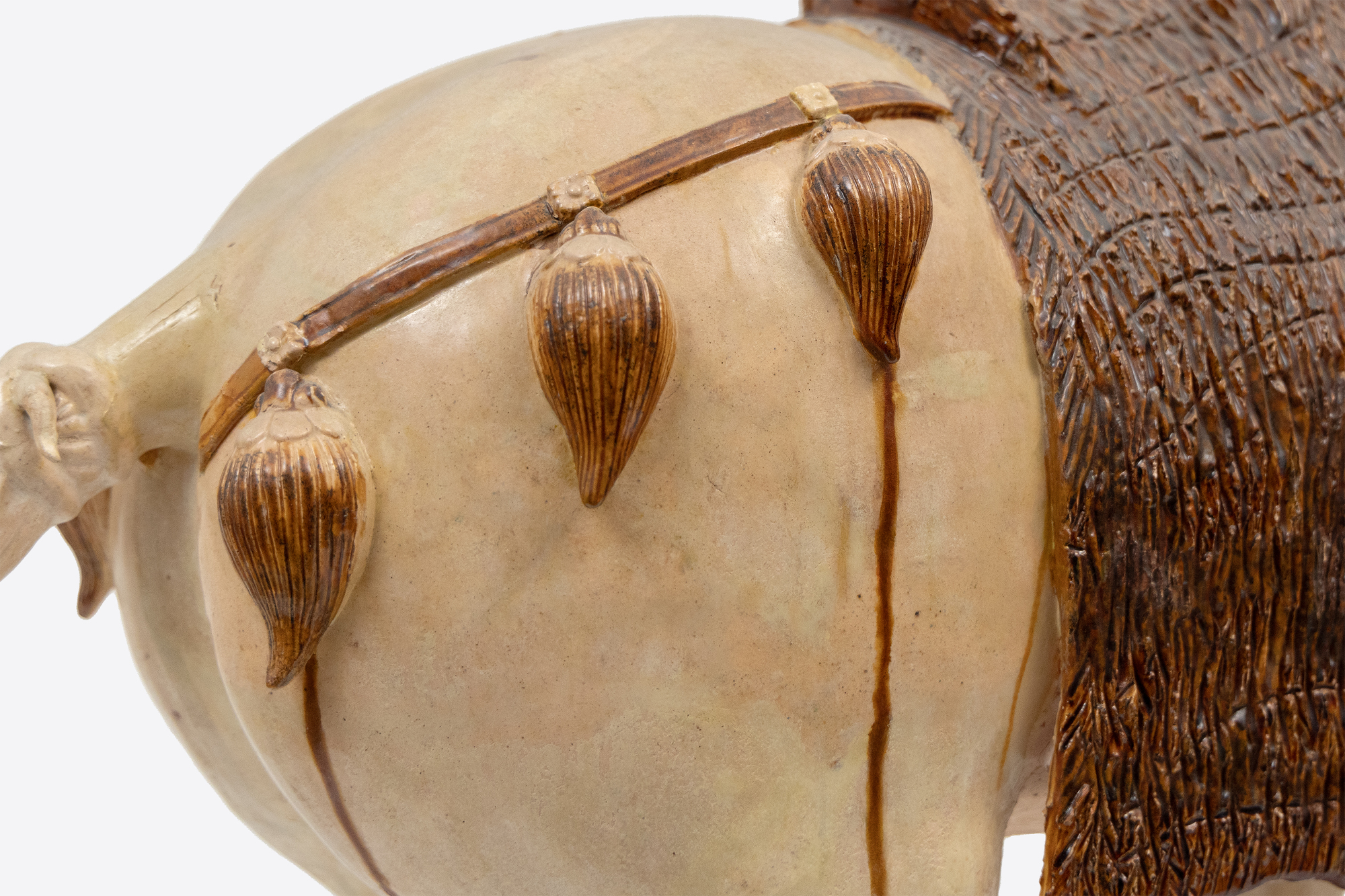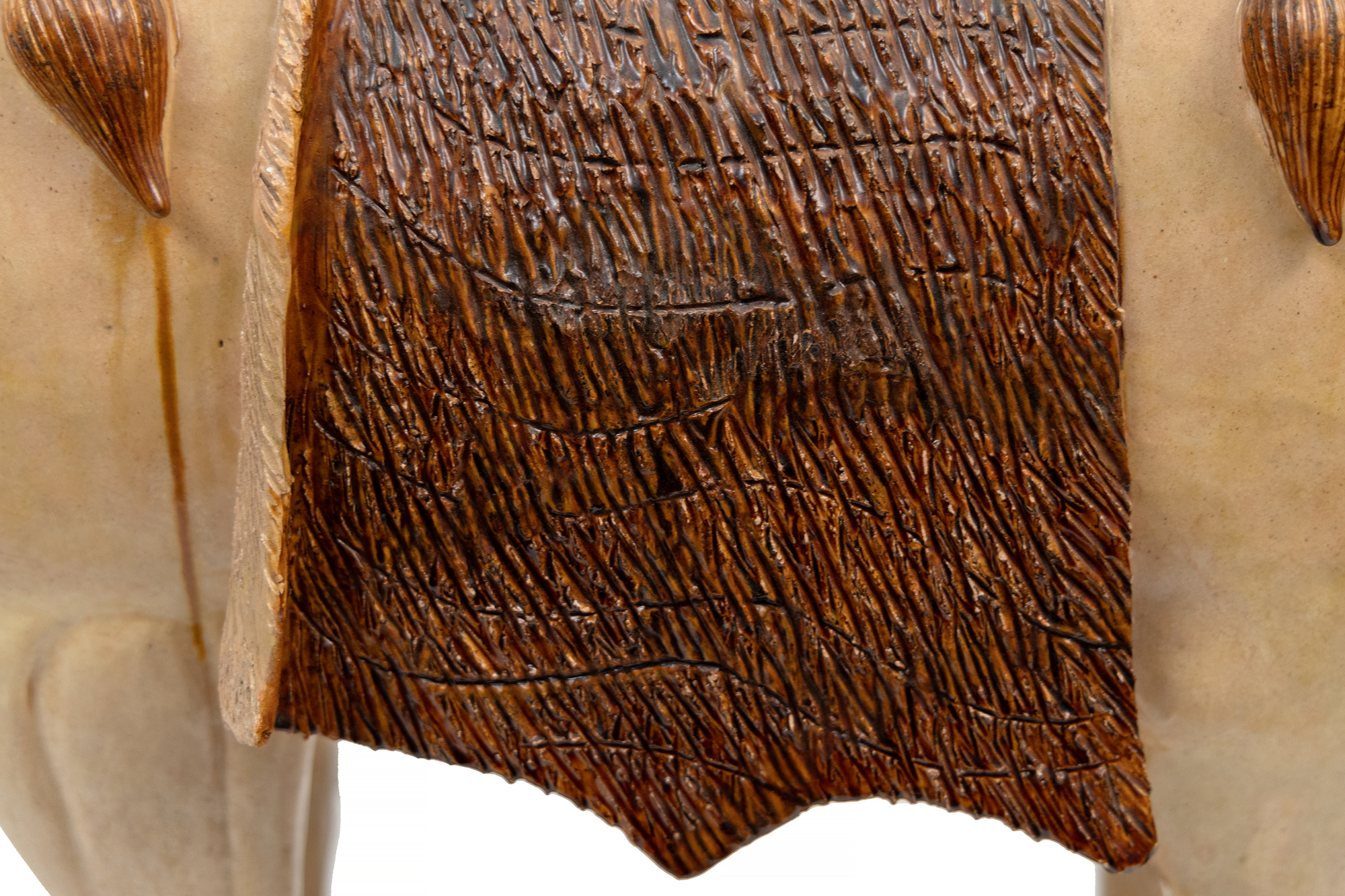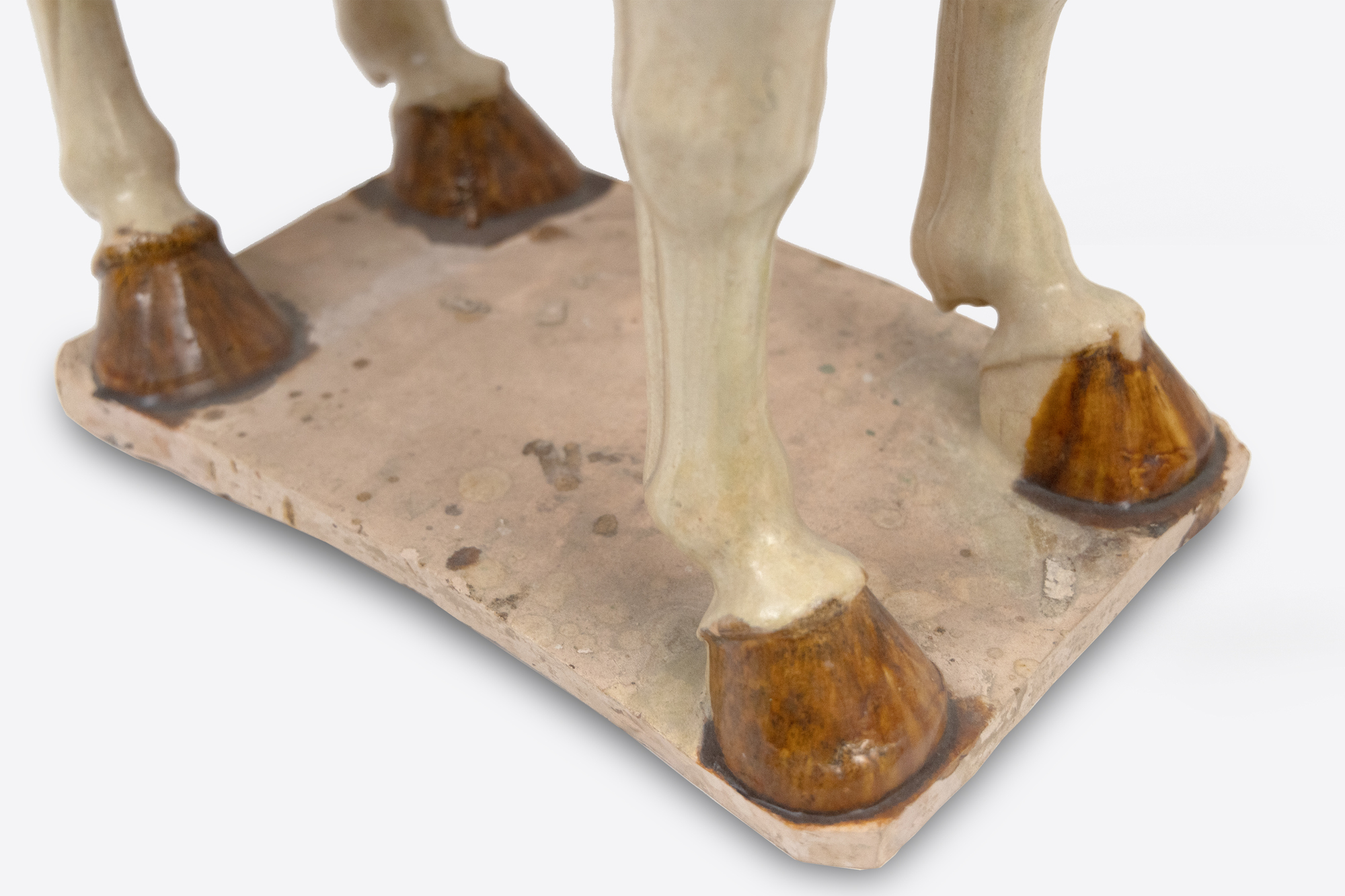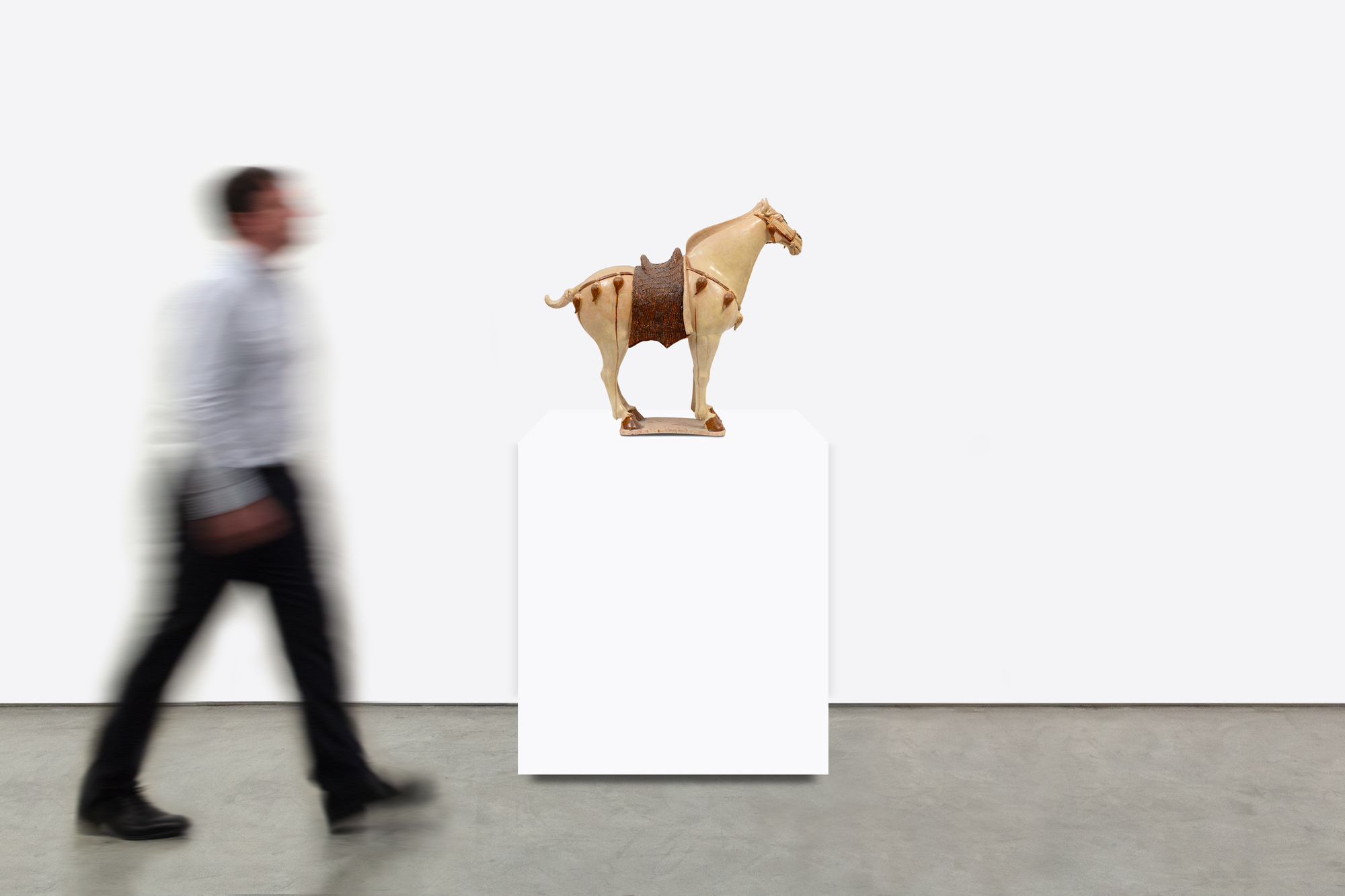الصينية







الاصل
برايفت كوليكشن ، كاليفورنياوتمشيا مع قرون من التقاليد، ظلت الطقوس جنازية مهمة جدا. وتوجد إدارة حكومية منفصلة مسؤولة عن الإشراف على تصنيع الزوارث. رسميا كانت هناك قيود على عدد البضائع الخطيرة والقيود المفروضة على حجم الأشياء التي يمكن أن تصاحب المتوفى، وفقا لرتبة - وكان من المفترض أن يكون المسؤولين أعلى مرتبة أن يكون الحد الأقصى من 90 التماثيل، لا يزيد عن 30cm طويل القامة في حين سمح لأفراد الأسرة الإمبراطورية عدة مئات تصل إلى حوالي متر واحد طويل القامة. ومع ذلك، تم خرق هذه القواعد في كثير من الأحيان. ويعتقد أقارب المتوفى أن بإمكانهم تحسين وضع أسلافهم في الآخرة من خلال توفير مينغقي بما يتجاوز الضرورة، وبالتالي ضمان حسن حظهم. وتتقاسم صناعة الخزف التصويرية لأسرة تانغ خصائص خاصة. الأشكال متحركة والحياة مثل، والموضوع يغطي جميع جوانب الحياة الاجتماعية والطقوس وكان حجم الأرقام صغيرة إلى حد معقول باستثناء بعض الأعمال الكبيرة الرائعة بتكليف لمقابر النخبة. أصبحت شخصيات من الحاشية والفنانين ، ولاعبي البولو والمسافرين الغريبة الذين وصلوا الآن بانتظام إلى المدن الصينية مع الجمال حزمة كبيرة مكانا شائعا ، مما يدل على الطبيعة العالمية للعصر. تخبرنا مجموعة متنوعة من الأشكال أن الحرفيين كان لديهم مجال للابتكار الفردي ولم يتم التحكم فيه من قبل قواعد تتعلق بأنماط معينة. الآن تحدث الزوارق جنازيّة ليس فحسب من قوة وقوة عسكريّة, غير أنّ أيضا من التطور وإنجازات فكريّة من ال متوفاة.


